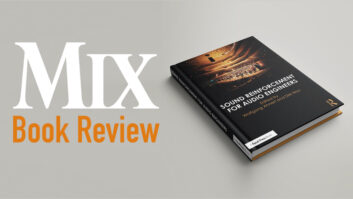One of the first studio engineers in England to break through into producing, Glyn Johns worked with the greatest acts of the Classic Rock era, recording many of their best-known albums. The sheer number of famous performances that he captured—songs that you hear every day of your life—is remarkable, and as a result, he worked over the years with The Beatles, Led Zeppelin, The Rolling Stones, The Who, CSN, Eric Clapton, The Eagles, Bob Dylan, Jimi Hendrix, The Steve Miller Band, The Clash, Rod Stewart, Neil Young, Joe Cocker and dozens of others, all of who appear in the pages of his new autobiography, Sound Man (Blue Rider Press, $27.95).

The book follows Johns all over the world as he heads from one musical hotspot to the next, and it’s all recalled with a clear head as he didn’t take drugs, unlike many of his clients. While controlled substances affect the story from time to time—a tale of carrying 13 pairs of Beatle boots through customs for Steve Miller is particularly harrowing—Johns’ story focuses on getting the work done and capturing great performances.
As a result, while typical readers will enjoy the fun behind-the-scenes stories about their favorite rock stars, the book provides some insights for recording professionals. Since it’s intended for a mainstream audience, Johns tends to stay away from talking gear, but he still finds time to discuss his famed method for recording stereo drums (the YouTube videos are all wrong, he says), Helios consoles (loved them), SSL consoles (hated them), and the acoustically perfect studio designs of the 1970s (they’re charmless).
Instead, Sound Man offers plenty of psychological observations about what it means to work in the studio. Johns kicks off the book defining what a producer does: “You just have to have an opinion and the ego to express it more convincingly than anyone else.” Then he adds, “Every time I start another project, I wonder if I am going to get found out.” Knocking himself down a peg or two is something Johns does quite a bit, often dismissing some of his younger decisions as brash, like when he quit recording Paul McCartney’s Red Rose Speedway “in a puff of steam.”
Many of the best stories in Sound Man, however, will send you scrambling to listen to tracks you’ve heard a millions times before, like the Rolling Stones’ “Let’s Spend The Night Together.” Turns out Mick Jagger was smoking a joint in the vocal booth between takes when the local police accidentally wandered into the studio. Quick action between producer Andrew Loog Oldham and Johns saved the singer from getting busted, and the upside was that the policemen’s nightsticks wound up used as percussion that’s just barely au- dible in the final mix.
Rock stars aren’t the only ones to walk through the pages of the book either, as Laurence Olivier, Clive Davis, David Geffen, Jean-Luc Godard, Robert Towne, Roman Polanski and Sharon Tate, George Martin, Shel Talmy, Joe Meek, Jac Hotzman and plenty of others make cameo appearances. A breezy, speedy read, Sound Man is a no-brainer for the audio pro on your holiday present list.
Sound Man on Amazon
http://x.co/5lkTR
Glyn Johns
glynjohns.com







